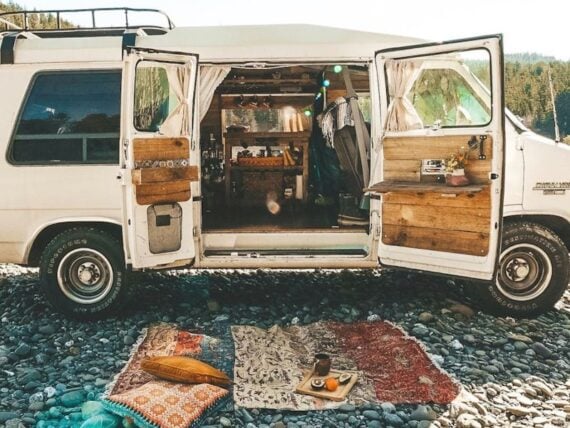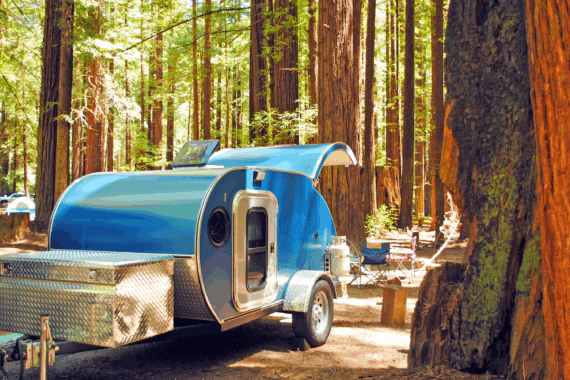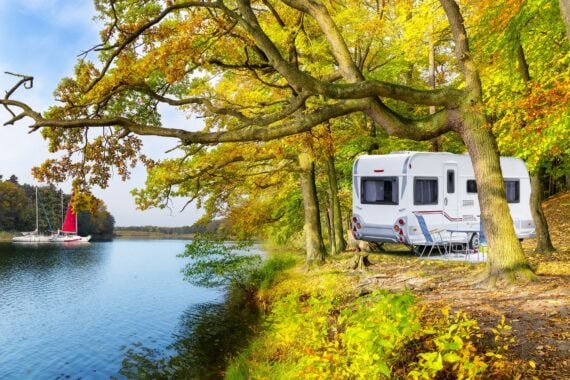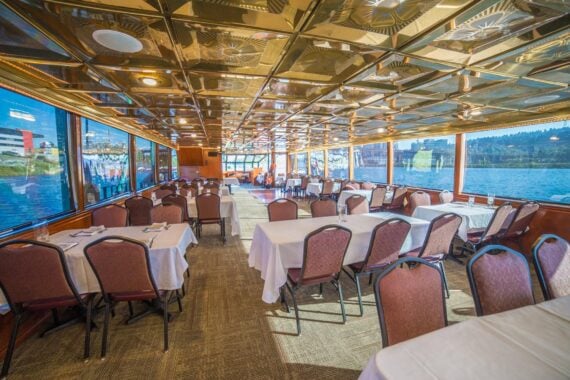A lot of people are turning their vans into mobile homes, and while these smaller vehicles may lack some of the amenities already built into RVs, they can still be turned into viable homes on wheels. Cheapism spoke to some experts in van conversion to get tips you can use to convert your van into deluxe digs. Related: 25 Affordable Camper Alternatives to an RV
BUILD YOUR BED SIDEWAYS TO MAXIMIZE SPACE
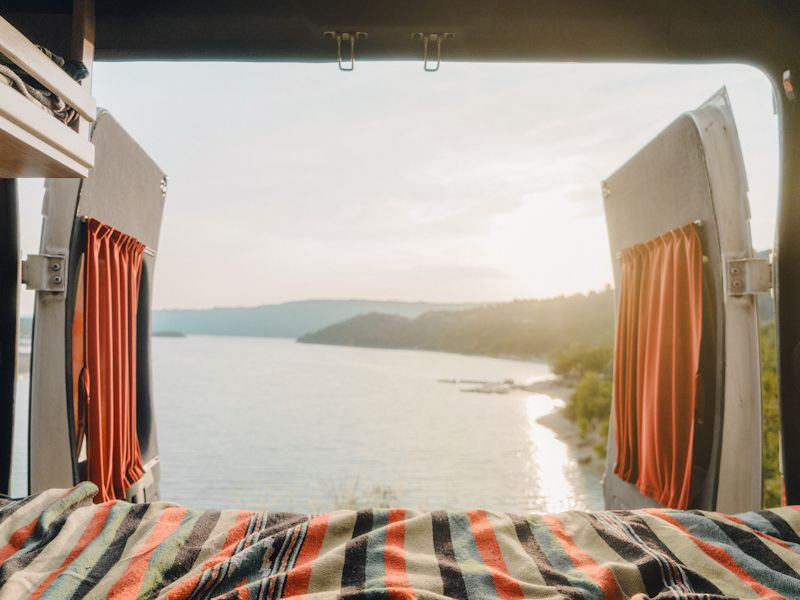
Positioning the bed sideways in the van (perpendicular to the length of the vehicle) can help maximize your living space — but make sure to get a van wider than you are tall. “The ProMasters are six feet wide on the inside,” Kaya Lindsay of One Chick Travels says. “Sprinter vans are 5 feet 9 inches wide. If you’re under 5 feet 4 inches, you can sleep sideways in a Chevy Econoline.”
HANG A HAMMOCK FOR AN ADDITIONAL SLEEP SPACE
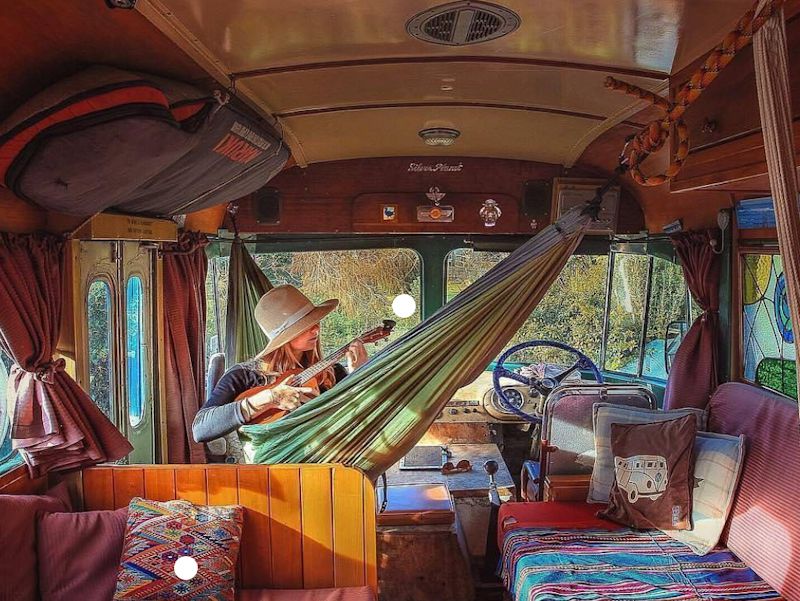
Related: The Coolest VW Vans Through the Decades
BUNK BEDS CAN DOUBLE SLEEPING QUARTERS IN TALL VANS
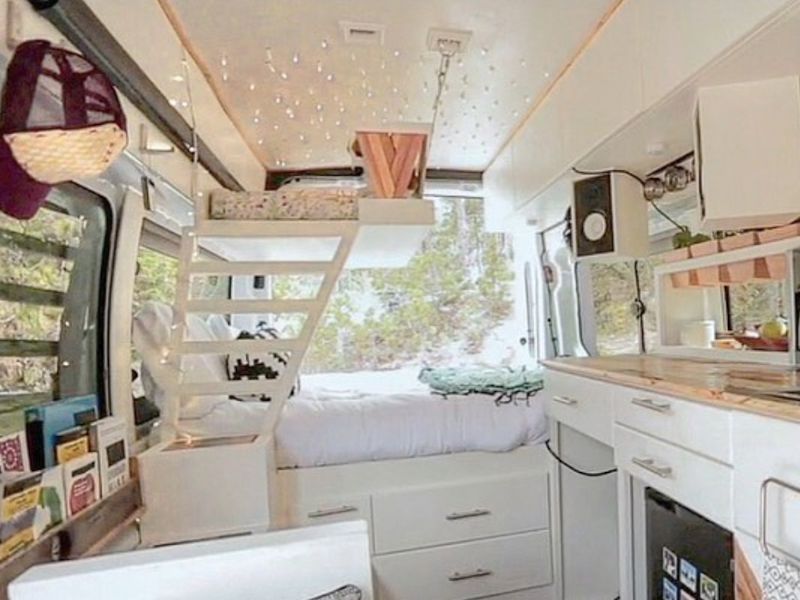
Another way to sleep extra people in a van is bunk beds. Jack Richens’ design at This Moving House hides a bed in a staircase so it can fold out when it’s bed time. The Fite family hangs their bunk from the ceiling.
BEDS CAN BE HIDDEN OR CONVERTED FOR OTHER PURPOSES
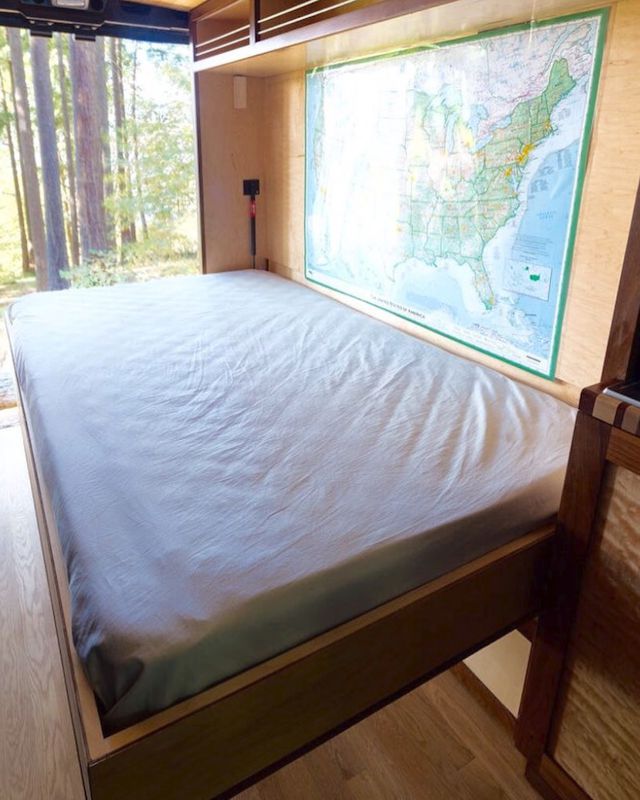
There are also several different ways a bed can move when not in use. It can slide, fold like a Murphy bed or fold couches. A bed can even slide out of the van for sleeping under the stars.
A DINING TABLE CAN CONVERT INTO A BED
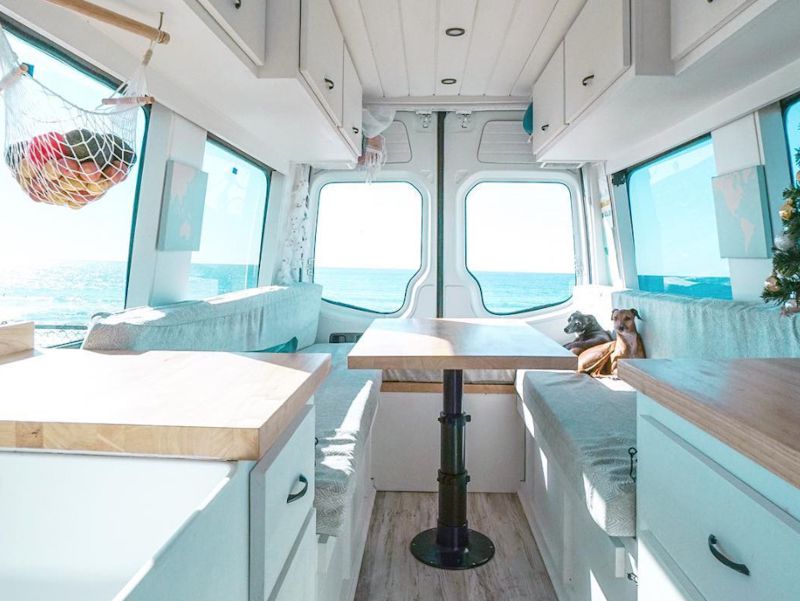
Audrey Desjardins has the instructions for building this combination table-bed combo and Kaya Lindsay has a similar set-up. “When you want to go to sleep and get into bed, all you do is take out the bottom of the table,” she says. “There’s a pole that keeps the table up and then the table top drops into place.”
Trending on Cheapism
CREATE UNDER-BED STORAGE
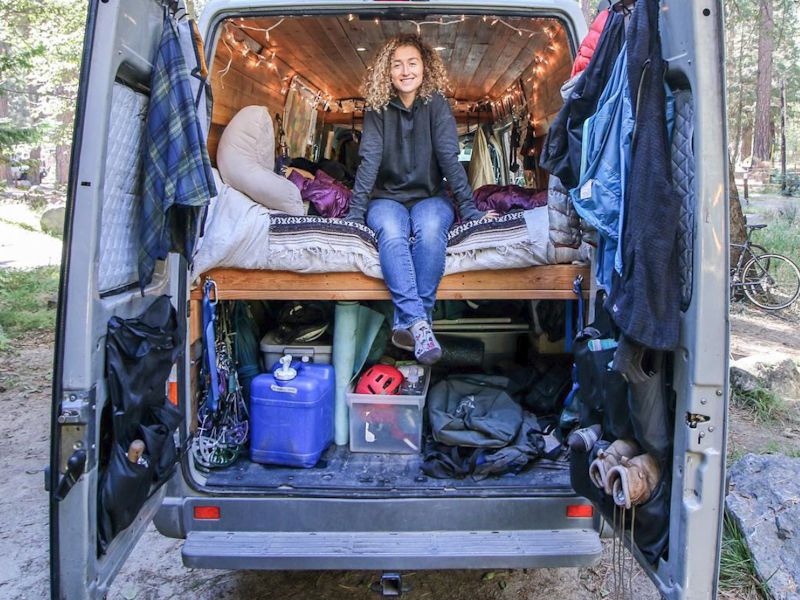
EXPLORE LOW-PROFILE LIGHTING SOLUTIONS
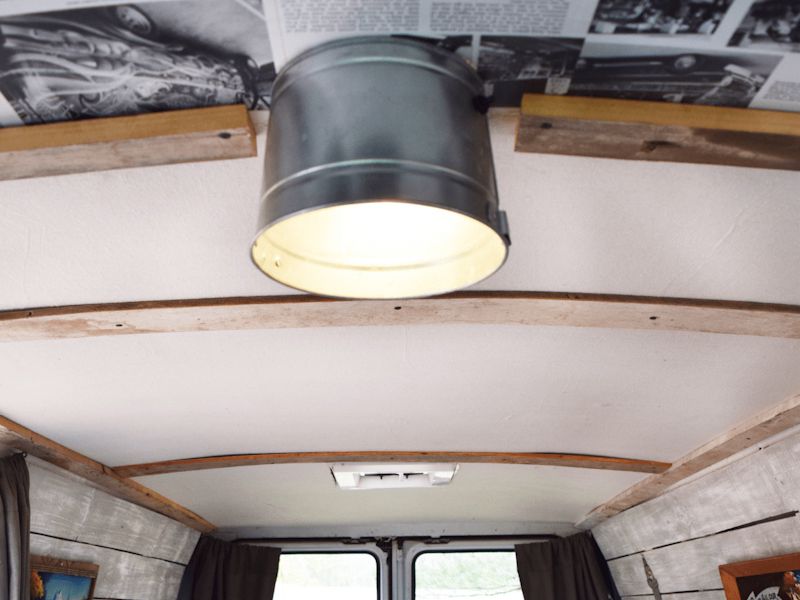
Gnau’s husband turned an overturned bucket and lightbulb into overhead lighting. “Head room is very important in a van, so finding a low-profile lighting option is key,” Melanie Gnau says. “We were in the hardware store one day and my husband found that small galvanized bucket, so we cut a hole in the bottom, turned it upside down and screwed it in — creating a light for less than $10.”
ELEVATE YOUR CABINETS TO MAXIMIZE STORAGE
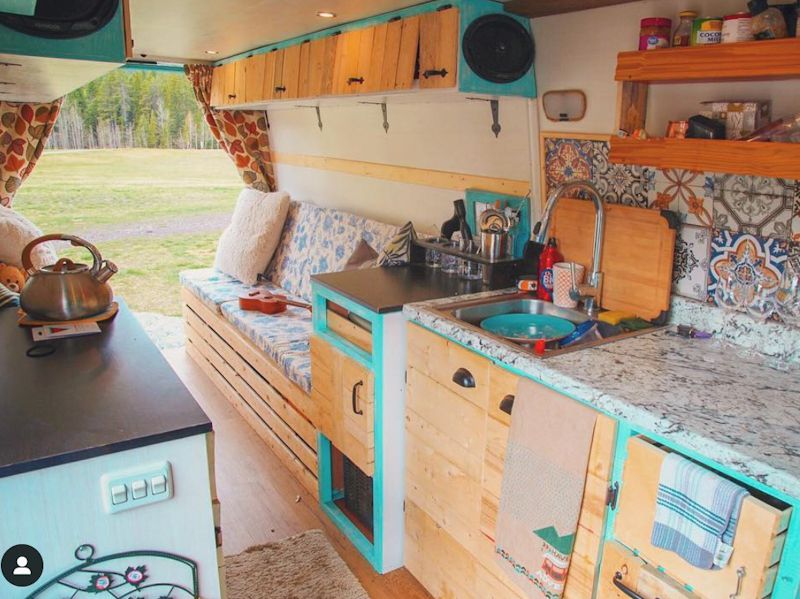
Sign up for our newsletter
ADD LIPS TO SHELVING TO KEEP OBJECTS FROM SLIDING OUT
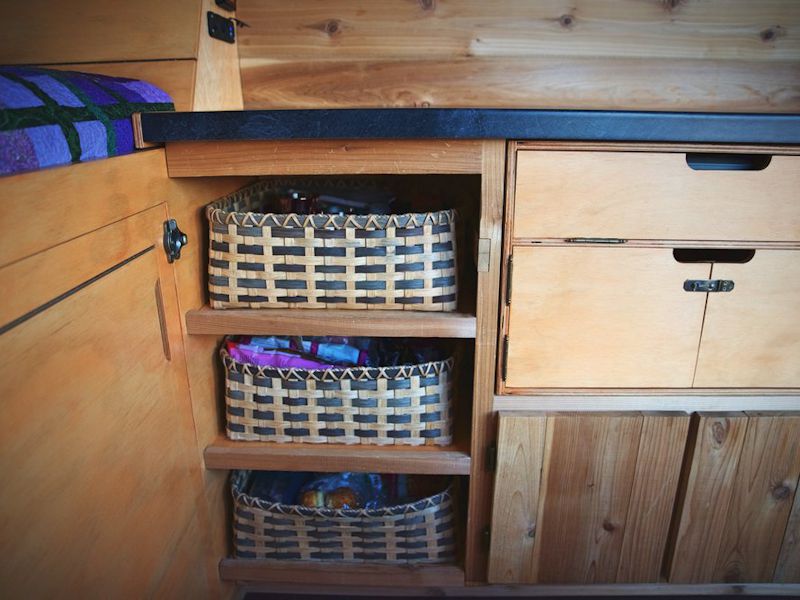
USE ROPES AND HOOKS TO KEEP DRAWERS CLOSED
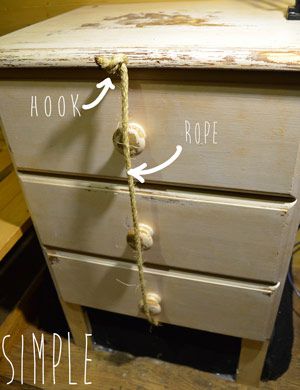
Van Dog Traveller Mike Hudson has a simple way to keep stuff from spilling out of drawers — tie a rope to a hook. Kaya Lindsay agrees that traditional locks can’t withstand the wear and tear of driving thousands of miles. “Drawer locks are not meant to move,” she says. “The way we build houses doesn’t translate perfectly to tiny houses on the move.”
SIMPLIFY YOUR SINK WITH LOW-TECH SOLUTIONS
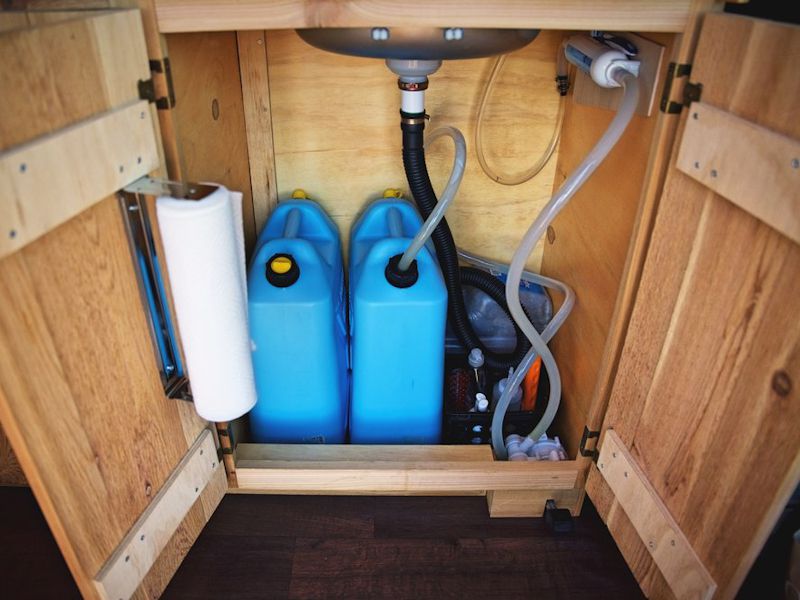
Kaya Lindsay regrets installing an electric sink pump, preferring a more low-tech solution for her water needs. “Battery power can be scarce,” she says. “It’s also really loud. There’s this little hand-powered pump that you can buy instead. The spigot mounts on the countertop, and then you run a hose from the spigot to your water tank. There’s a pump built into the top, so it’s literally one piece that you buy and have plumbing.”
A WELL-HIDDEN EMERGENCY TOILET CAN COME IN HANDY
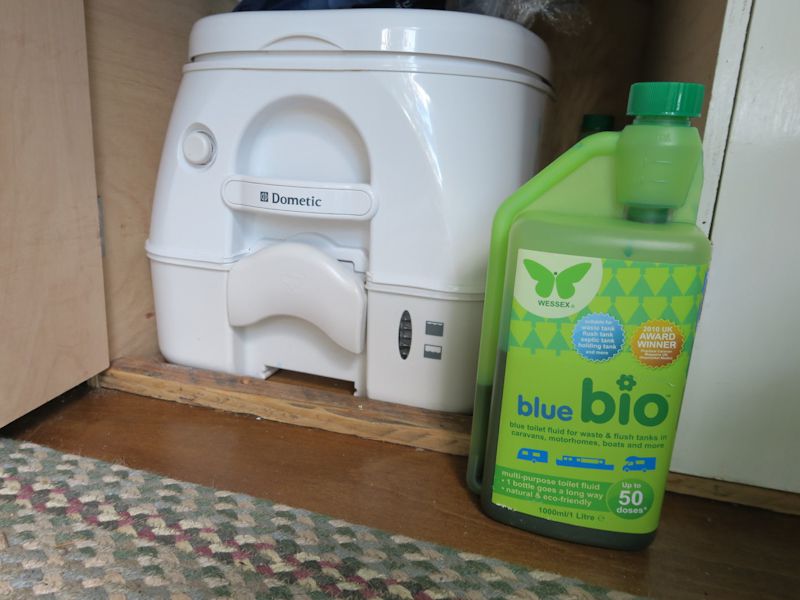
A van is too small for a flushing toilet, but Melanie Gnau does have a portable toilet in her van just in case. “If we have the choice, we’d rather not use the toilet in the van, but it’s nice to have for emergencies,” she says. “We built a box around it, so it’s hidden.” Gnau recommends a similar portable toilet.
INSTALL A CEILING FAN FOR BETTER VENTILATION
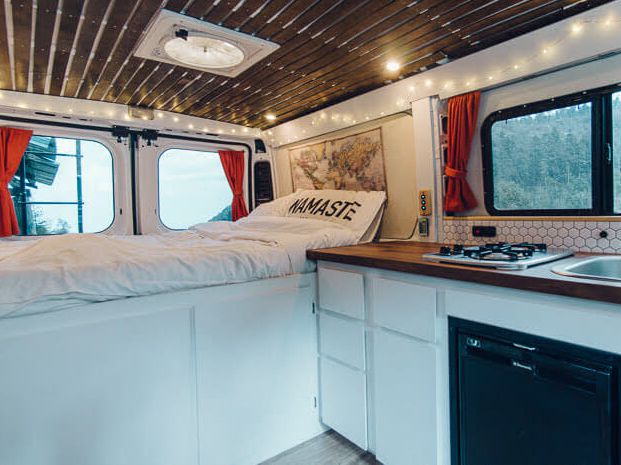
A larger fan is worth the money, as it can save a van from being overwhelmed with smoke, odors, and more. “It’s the same size hole that you have to cut in the roof, but the fan itself is just a little computer fan essentially,” says Adam Nawrot. “Some of the nicer ones are a full 14-inches.” Kaya Lindsay even has a video showing how to install a fan.
USE THIN PANELS FOR FLOORS AND CEILING TO MAXIMIZE SPACE
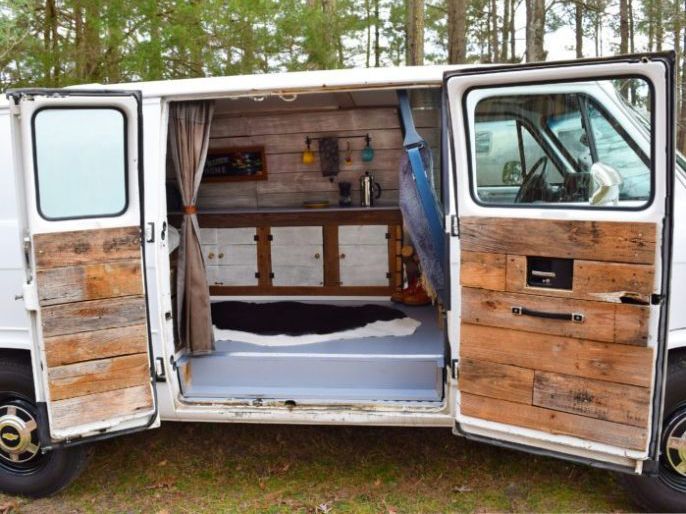
BUILD A SUBFLOOR TO KEEP OUT MOISTURE
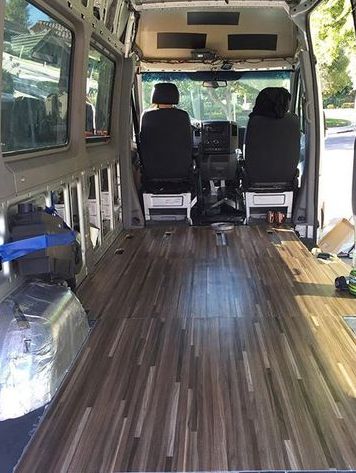
Since vans were originally made to hold cargo, Kaya Lindsay recommends laying down a subfloor to fill the van’s drainage holes. “Particularly if you’re going somewhere super moist and damp, make sure you fill those drainage holes in,” she says. “All of them have weird, ridged, bumpy flooring, so make sure you make it flat. It’s nice to have flat floor.”
GET CREATIVE WITH SALVAGED AND REPURPOSED WOOD
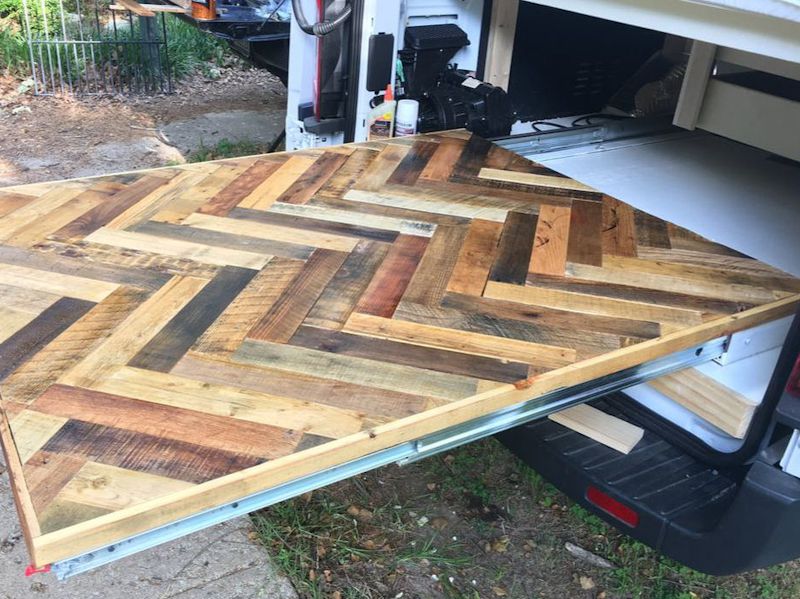
Melanie Gnau and her husband saved money by buying fence wood and using it for their walls. Reclaimed wood is also an option. Whitewashing the wood also made for a modern, less rustic look.
INSTALL CEILING PANELS SECURELY
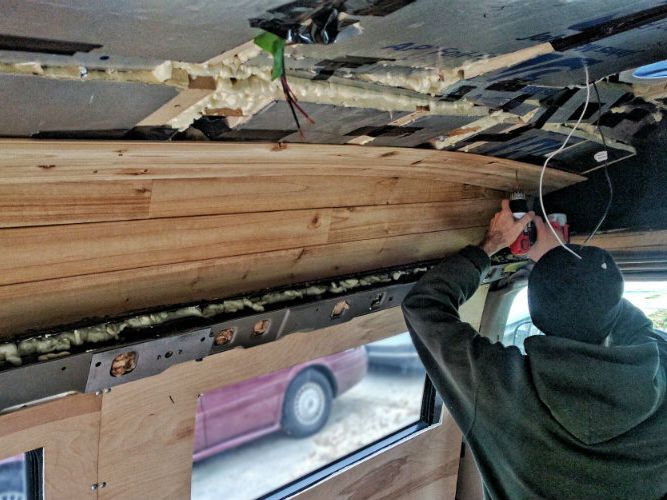
Kaya Lindsay installed Home Depot cedar panels but had to reinstall them because she didn’t glue every possible point to the ceiling ribs. “Glue down the paneling on every rib of your ceiling,” she says. “I didn’t do that for a long time. Panels were falling off because I thought the glue was going to be enough to keep them up and it wasn’t.”
GET CREATIVE WITH WINDOW TREATMENTS TO MAXIMIZE SPACE
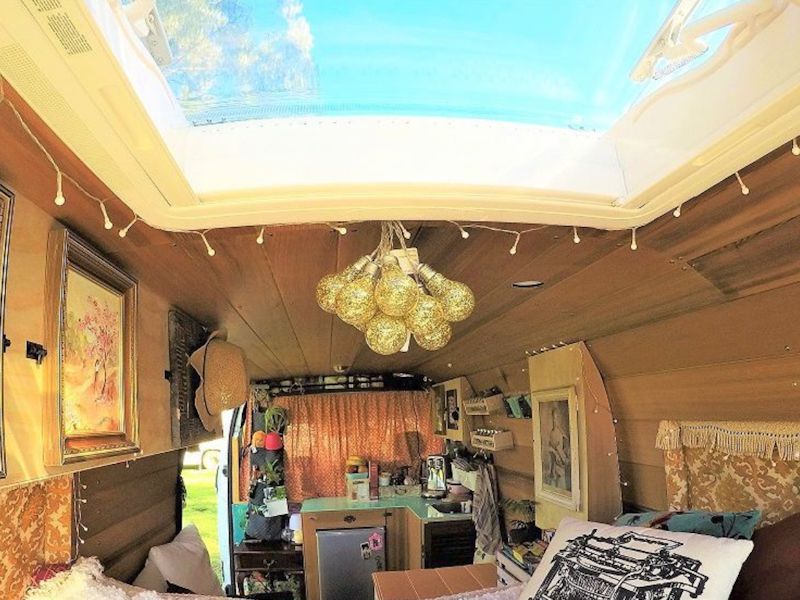
UTILIZE THE EXTERIOR OF THE VAN FOR ADDITIONAL STORAGE
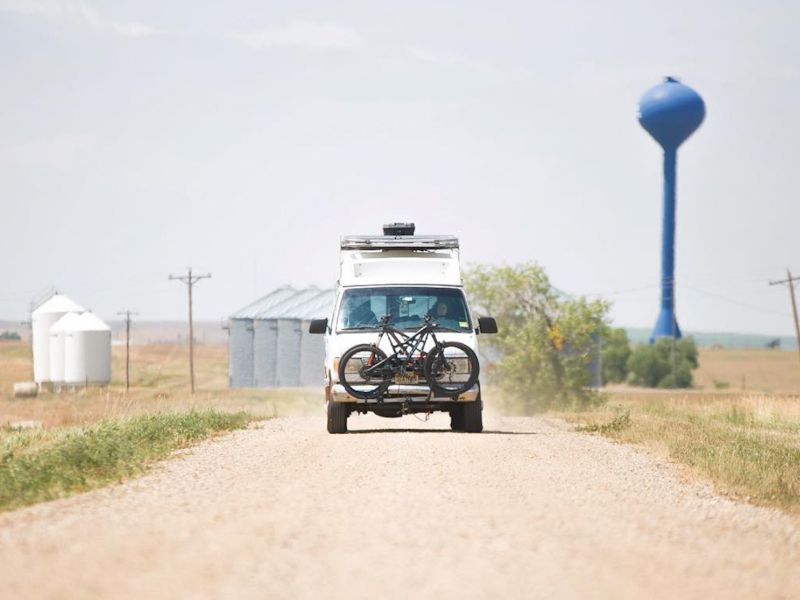
In addition to maximizing interior storage space, there are plenty of exterior solutions for storing additional cargo. You can tie lots of gear down to the roof, and even put more gear inside that gear. Adam Nawrot put his bike rack on the front bumper for practical reasons. “I put the bike mounts on the front because I wanted the back doors to be easy to open at all times,” he says. “If you have a bike rack on the back, it becomes kind of a pain opening the back.” Nawrot also puts his kayaks on the roof. “The kayaks don’t really help with aerodynamics for the van, but the nice thing about having the kayaks on the roof is that you can keep a lot of your kayaking gear inside of the kayak. There is a big cavity.”
